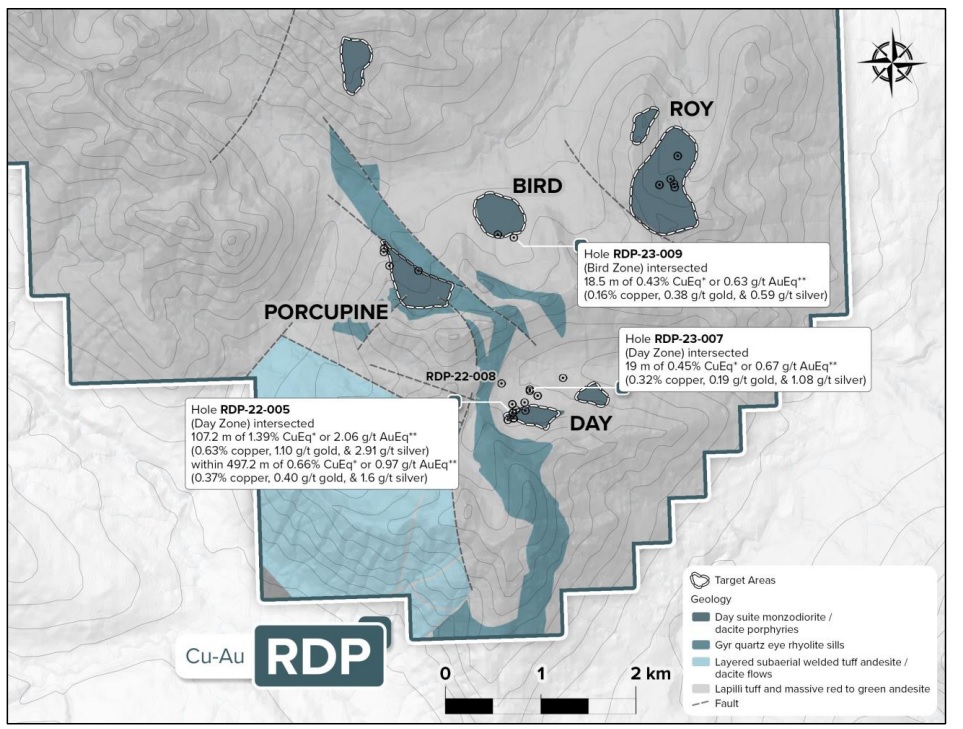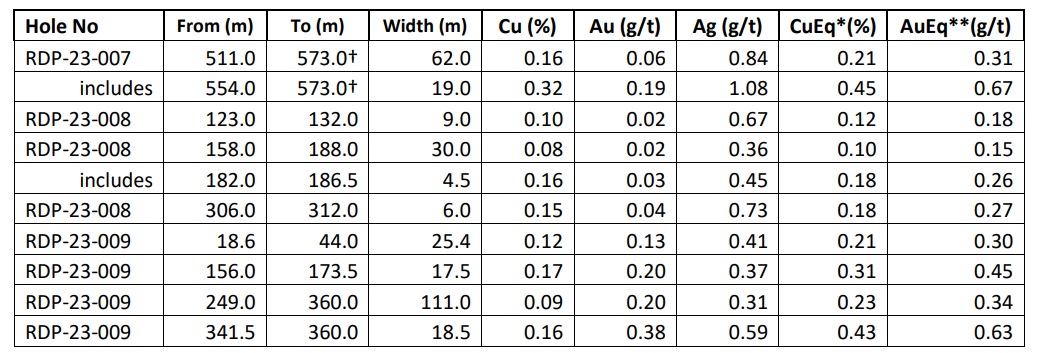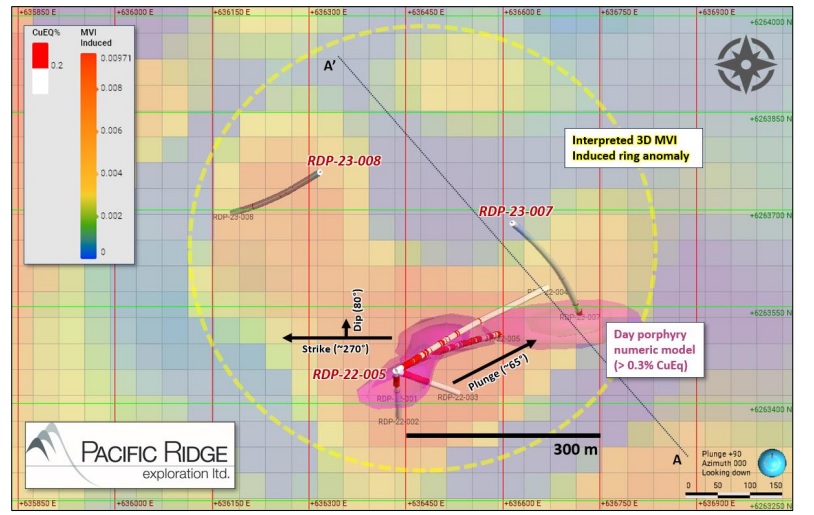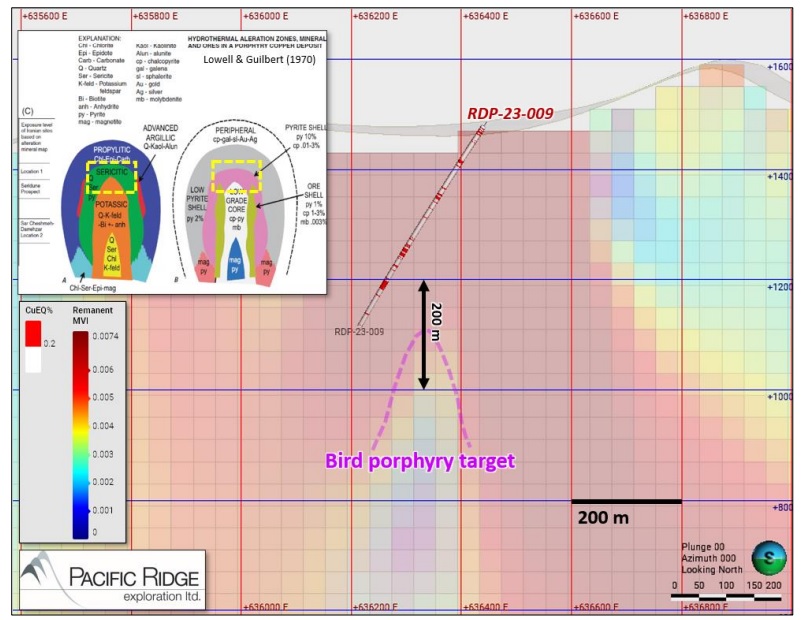
Pacific Ridge Exploration (PEX.V) has published the results of the 2023 diamond drill program on the RDP project in British Columbia, a copper-gold project where senior producer Antofagasta (ANTO.L) is spending US$10M as part of an earn-in program where it can obtain a 75% stake in the asset.
The 2023 drill program consisted of three drill holes for a total of 1,428 meters of drilling. Two of the holes were drilled at the Day target while the remaining hole was drilled at the Bird target. As drilling three holes is a pretty limited drill program, we weren’t expecting much from the drill program although we had some hopes for the Day target as the company was drilling in the vicinity of where hole RDP-22-005 encountered 497.2 meters of 0.66% copper-equivalent in the 2022 diamond drill program. Pacific Ridge and Antofagasta decided to complete a major step-out from that hole and drilled a hole 300 meters to the northeast and 300 meters to the northwest of last year’s hole.

RDP 23-007 and 008 were drilled on the Day target and unfortunately the company was unable to replicate the success from last year. Hole 8 was pretty light on grade overall and likely wouldn’t make the cutoff grade in a mining scenario, while hole 7 did encounter some interesting intervals but the mineralization started very deep down-hole and even the 19 meters containing 0.45% CuEq would be pretty difficult at that depth.

The results are disappointing, but we also completely understand why Antofagasta and Pacific Ridge wanted to drill those two specific holes, as the image above shows how they were targeting the magnetic vector inversion anomaly shown above. If those two holes would have encountered similar widths and grades as in hole 22-005, the exploration teams likely would have been dancing on the table. But for now, there appears to be smoke. Quite a bit of smoke, but no burning fire.
Hole RDP-23-009 was drilled in the Bird target. The grades were better there with three distinct mineralized zones including a 111 meter interval with an average grade of 0.23% copper-equivalent which included a zone of 18.5 meters containing 0.43% copper-equivalent but that higher grade interval is located pretty deep down-hole. Interestingly, as the table below shows, the higher copper-equivalent grades going deeper down-hole are actually caused by the gold grades picking up while the copper grades remain relatively consistent.

As this was the very first hole drilled on a new target, we can’t be harsh on Pacific Ridge and Antofagasta. The initial interpretation of the drill results indicates the hole intersected the top of a potassic alteration and mineralization shell and the interpretation of the magnetic vector inversion indicates a porphyry target slightly deeper.

It will be interesting to see what Antofagasta’s technical team will decide after this year’s exploration program. As the 2023 drill program consisted of less than 1,500 meters it is still way too early to draw any definitive conclusions and the interpreted porphyry target at Bird could be an appealing priority target for 2024.
Disclosure: The author has a long position in Pacific Ridge Exploration. Pacific Ridge is a sponsor of the website. Please read the disclaimer.

